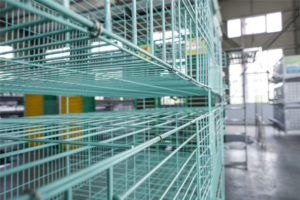The purpose of breeding hens is to provide high-quality eggs, so the hens generally need a suitable growth environment. Therefore, when laying hens are used in laying hen cages, more attention must be paid to various aspects of management. Now the author will share some points of attention for farmers in using poultry breeding equipment for cooling management.
1. Design of air inlet and air outlet: Generally, the air inlet area of the chicken house is 2-3 times of the air outlet area. If the air inlet is too small, the wind speed in the house will be insufficient, the temperature difference between the front and back will increase, and the temperature of the chicken will decrease, which will seriously affect the cooling effect.

2. Wind speed control: Generally, the wind speed is below 2 meters per second. Most of the laying hens use powder. If it is found that the feed dust in the chicken house is too large, consider reducing the number of fans turned on during feeding. One fan can be reduced at non-extremely high temperatures. Avoiding air leakage can also increase the corresponding wind speed.
3. Wet curtain opening: After turning on all the fans completely, if it is found that about 20% of the chickens still open their mouths to breathe, they need to open the wet curtain immediately. If the temperature drops significantly, the number of fans that can be turned on in the house can be appropriately reduced.
4. Longitudinal ventilation: If the vertical ventilation continues until night, the work of turning off the fan and putting on the curtains should be implemented by people. In particular, pay attention to the timing of “turning off the fan and implementing natural ventilation”, and try to be as late as possible, and the conditional field will be implemented at about 2 am. Only by strengthening management can the advantages of vertical ventilation be maximized.
The above are the points shared by the author. Some points about the use of poultry breeding equipment to ventilate and cool chickens. If you want to know more, or if you have any other questions, you can consult the technical staff of the poultry farming equipment supplier.